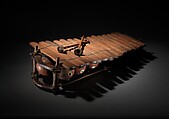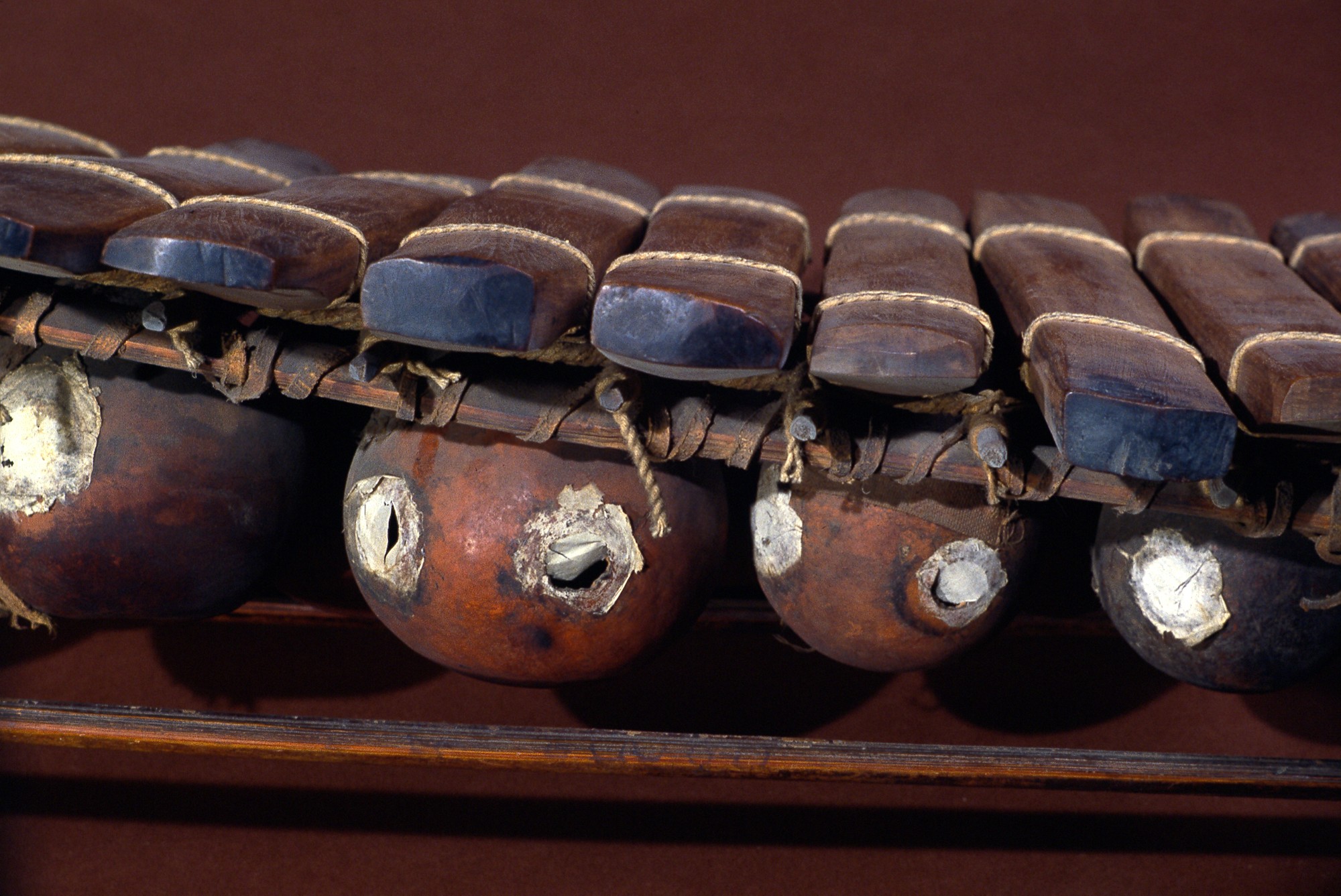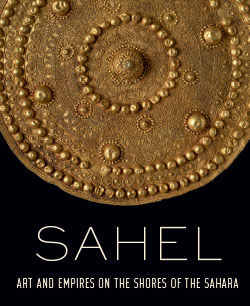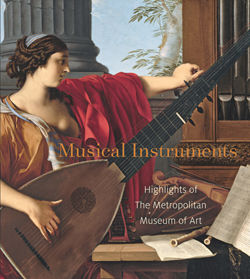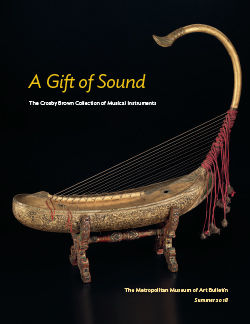Bala
The bala is a wooden xylophone that comes from the Mandé region of West Africa, which refers to the geographical shadow of the Mandé empire (1235-1469 A.D.), including present-day Mali, Senegal, Guinea, Guinea-Bissau, and the Gambia. The Mandé bala is the first instrument of Malinke jeli: a patrilineal tradition of musicians, storytellers, and singers who perform a variety of functions in Mandé society.
There are many different versions of the bala’s origin story in jeli traditions. One common thread among these many versions is the influence of Susu (also Sosso) sorcerer king Sumanguru Kante on the instrument, reflecting the significance of numulu, or blacksmiths, on the tradition. Another common thread is the symbolism of the magical bala, specifically Kante’s bala, being transferred to Bala Faseke Kouyate, the first Malinke player, which is representative of the transfer of power from blacksmiths to warriors in the thirteenth century with the birth of the Mandé empire. According to ethnomusicologist Eric Charry, this bala in the Met’s collection closely resembles the Susu Bala, the original Bala played by Kante and which has been closely guarded by the Kouyate family in Niagassola, Guinea, for generations (2000: 144).
Each of the bala’s slats are smoked to both petrify the wood and tune it to a precise pitch. The slats, graduated in length and tapered toward the smallest in length, are then fastened to the top of a four-sided wooden frame–a morphological detail that distinguishes it from other sub-Saharan African xylophones–with hide ropes. The hide rope that secures the slats on this bala is fastened to vertical end posts and also rests on top of and is tied to fifteen dowels that alternate with the slats. These dowels, secured to the frame, provide a structure to which fourteen gourd resonators called batolu have been attached in a zigzag arrangement. Shorter, horizontal beams on either side of the instrument are rounded outwards in order to accommodate the batolu.
A sound hole is carved into each batolu, on top of which a talingjalo, a mirliton or vibrating membrane, is placed using an adhesive made of mashed rice or bread. Talingjalo translates to spiderweb and, indeed, these mirlitons are made with the protective silk wrapped around spider egg sacs commonly found attached to rock surfaces in the region. The appearance of talingjalo on the bala connects it materially and morphologically to voice-disguisers found across sub-Saharan Africa, which more often than not use vibrating spider silk membranes over at least one end of a tube made by a variety of materials (see, for example, Balfour 1948). The Met’s musical instrument conservators have remarkably managed to preserve the original 19th century spider silk talingjalo on this bala using Japanese paper conservation techniques. Modern Mandé musical instrument builders, however, have increasingly replaced spidersilk with a more durable and accessible material—cigarette paper or plastic bags.
The wooden frame suspends the batolu above whatever surface the bala is placed on. When a slat is hit with a rubber-tipped mallet, air passes through the batolu, amplifying the slat’s tone and vibrating the talingjalo, creating a distinct buzzy timbre. Outside of the teaching context, wherein an apprentice may learn to play by sharing a bala with his teacher, the Malinke bala is performed by a single player, although several bala players may perform together at one time. With the slats arranged parallel to one another, ascending in pitch from right to left, the right hand voices the bass and tenor notes, while the left plays in the alto to soprano range of the instrument.
Broadly speaking, a bala piece begins with a short melodic introduction, in which the left and right hand typically work together to spell out a single melodic line. The right hand will then articulate the kumbengo: a rhythmic pattern, similar to a vamp, that characterizes Mandé instrumental performance, particularly on jeli instruments like the bala, kora and ngoni. The kumbengo may be varied tonally (for example, transposed a third higher), but rarely rhythmically, apart from adding or subtracting beats, over the course of a performance. The left hand will then play a series of melodic and rhythmic lines in dialogue with the kumbengo. This may include a reiteration of the melody, a variation on the melody, and a series of improvisations. A player’s virtuosity is often demonstrated by how many ways they are able to syncopate the kumbengo with their left hand while also holding it steady with the right. When Bala players perform as an ensemble, they will often recreate this structure, with one player performing the kumbengo, often in both hands, thereby producing an octave, while others syncopate the kumbengo in interlocking rhythmic patterns. (Althea SullyCole, 2022)
References:
Balfour, Henry. 1948. “Ritual and Secular Uses of Vibrating Membranes as Voice-Disguisers.” The Journal of the Royal Anthropological Institute of Great Britain and Ireland 78, no. 1/2: 45–69.
Charry, Eric. 2000. Mande Music: Traditional and Modern Music of the Maninka and Mandinka of West Africa. Chicago: University of Chicago Press.
#Dr. Benny Kalanza "Travels in Sound" NPR
Due to rights restrictions, this image cannot be enlarged, viewed at full screen, or downloaded.
This artwork is meant to be viewed from right to left. Scroll left to view more.
